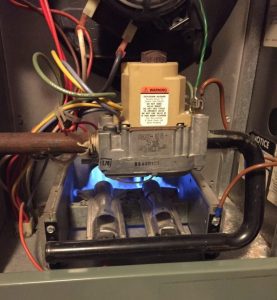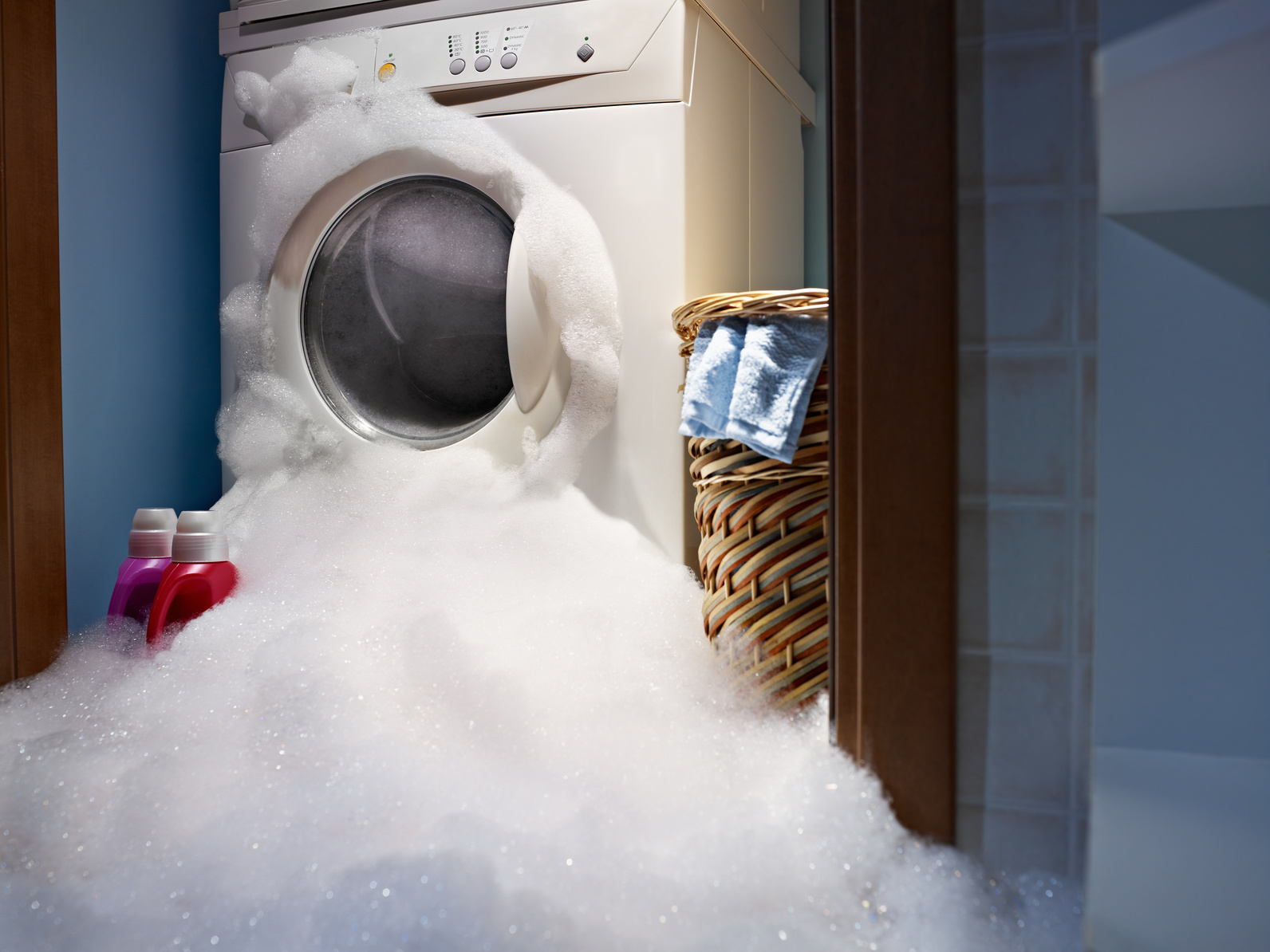What You Need To Know About Indoor Air Quality
Your home is the one place you and your family should be able to breathe easy. Whether you’re aware of it or not, the air quality in your home can pose a serious threat to you and loved ones.
That’s why it is so important to understand:
- The symptoms of poor air quality
- What causes indoor pollutionPollution is the introduction of harmful substances into the... More
- How to improve air quality
What Are the Symptoms of Poor Air Quality?
Respiratory challenges are the most obvious sign that you may be breathing in toxic air. These indications typically
include:
- Shortness of breath
- Painful breathing
- Coughing and sneezing
In worst-case scenarios, poor air quality can leadLead is a heavy metal that can be toxic to humans, especiall... More to asthma, bronchitis, and even lung cancer. However, there are also many non-respiratory symptoms of indoor air pollutionIndoor air pollution refers to the presence of harmful subst... More, including:
- Dizziness and fatigue
- Nausea and vomiting
- Rapid heartbeat
- Itchy or watery eyes
- Headaches and migraines
- Rashes and allergic reactions
If anyone in your family starts exhibiting these symptoms, it is vital to correctly identify and remove the most likely sources of contaminationContamination is the presence of harmful or unwanted substan... More. Keep reading to learn what this entails.
Common Sources of Indoor Air PollutionIndoor air pollution refers to the presence of harmful subst... More
There are a host of natural air pollutionPollution is the introduction of harmful substances into the... More sources that existed long before humans arrived on the scene. Farther down, you’ll learn how to eliminate pollutants such as dust, pollen, moldMold is a type of fungus that grows in damp or humid conditi... More, and mildewMildew is a type of fungus that grows on damp surfaces, typi... More. Yet the real danger is the never-ending array of man-made chemicals and materials that we bring into our homes — sometimes on a daily basis. These include:
- Outdoor air pollutants — released by cars, factories, and society at large

- Carbon monoxide (CO) from cigarettes, furnaces, chimneys, and car exhaust (including from the idling vehicle in your garage)
- Volatile organic compounds (VOCs), which include cleaning agents, beauty products, glues, paints, aerosols, pesticides, and repellents
- Mold and mildew growth, which can form from recent or past water damage and excessive moisture.
- Nitrogen dioxide (NO2) is another toxic compound to avoid. Combustibles represent the main source of NO2 — especially when using stoves and other kitchen appliances that aren’t properly ventilated
There’s another category of exposure — one that stems from the construction process. In other words, the air pollutionPollution is the introduction of harmful substances into the... More sources below may have existed before you even moved into your home. These include:
- Asbestos used for fire-retardant shingles and floor tiles
- RadonRadon is a naturally occurring radioactive gas that can accu... More seeping from your home’s foundation or sump pumps
- Formaldehyde used in a range of building materials (not to mention carpets and furniture)
- Lead-based paints used to cover your home’s exterior, interior, or both
Fortunately, building codes now forbid using many of the above chemicals in construction and disaster reconstruction processes. However, depending on when your house was built, these dangers may already be baked into the foundation (figuratively and literally).
The question is, what steps can you take to reduce your family’s exposure to poor indoor air qualityIndoor air quality (IAQ) refers to the condition of the air ... More and all the health-related complications that come with it?
How to Improve Indoor Air QualityIndoor air quality (IAQ) refers to the condition of the air ... More in Your Home
Cleaning the air in your home is a multi-step process that begins with commissioning an inspectionInspection is the careful examination and assessment of a pr... More by a certified air quality professional. Doing so provides a baseline so you can measure and track the effectiveness of the solutions below.
Keeping Outside Air Pollution From Coming Inside
The next step involves establishing a “perimeter” to prevent outdoor air pollutionPollution is the introduction of harmful substances into the... More from contaminating your home’s interior. Commonsense strategies include:
- Sealing cracks in the walls and installing all-weather windows and doors.
 These improvements can help limit contaminated outdoor air from entering. Better still, they’ll help to lower your heating and cooling bills — providing additional money to finance some of the more intensive fixes covered below.
These improvements can help limit contaminated outdoor air from entering. Better still, they’ll help to lower your heating and cooling bills — providing additional money to finance some of the more intensive fixes covered below.
- Inspecting your air-conditioning and heating system every year. Because air-conditioning units and furnaces are major sources of air pollutionPollution is the introduction of harmful substances into the... More, optimizing either can help dramatically improve your home’s “breathability.” Like the above tip, more efficient climate control leads to higher savings. This is especially true if you’ve already sealed the home with better windows and doors.
Cleaning the Air
The next phase involves eliminating common sources of air pollutionPollution is the introduction of harmful substances into the... More from within the home.
Improve VentilationVentilation is the process of exchanging or circulating air ... More
Because moldMold is a type of fungus that grows in damp or humid conditi... More and mildewMildew is a type of fungus that grows on damp surfaces, typi... More naturally thrive in moist environments, you can eliminate these air pollutionPollution is the introduction of harmful substances into the... More sources with better ventilationVentilation is the process of exchanging or circulating air ... More. This means installing exhaust fans in bathrooms and kitchens. It’s also a good idea to clean air ducts and change the filters on a regular basis.
If there are any cigarette smokers in the home, it’s time to create a new house rule that forbids indoor smoking.
This is also the perfect opportunity to add a little “green” throughout your home. Houseplants can help filter air and remove toxins such as CO2.
Reduce Exposure to VOCs
The best way to avoid becoming sick from industrial cleaning products is to replace them with organic alternatives. If you’re not sure where to buy (or how to make) an all-natural laundry detergent, a quick Google search should point you in the right direction.
No matter the source, store all VOCs responsibly (out of children’s reach). Only use these products in well-ventilated areas.
Get Up to Code
If your home already contains asbestos, leadLead is a heavy metal that can be toxic to humans, especiall... More, radonRadon is a naturally occurring radioactive gas that can accu... More, or formaldehyde, it is imperative to have these removed as soon as possible.
Never handle these materials yourself. Instead, bring in a licensed professional who can safely remove and dispose of these toxins for you.
MitigateTo mitigate is to reduce or limit the severity of damage, ri... More Combustibles
Appliances that rely on combustion are a major source of CO2, CO, and NO2. While it’s not possible to eliminate them, exposure can be reduced by:
- Improving the ventilationVentilation is the process of exchanging or circulating air ... More around appliances, such as stoves, heaters, and furnaces
- Regularly servicing these appliances so they remain as energy-efficient as possible
Cost Efficient Solutions
Some people delay improving the air quality in their homes due to cost. Asbestos removal isn’t free. Neither are ventilationVentilation is the process of exchanging or circulating air ... More fans, weather-proof doors, or even houseplants. However, it is suggested that you get an indoor air qualityIndoor air quality (IAQ) refers to the condition of the air ... More inspectionInspection is the careful examination and assessment of a pr... More done by a professional.
If you park your cars in the garage, it’s actually cheaper and cleaner to:
- Not let your vehicle idle — especially when the garage door is closed
- Keep your car in optimal working order with scheduled maintenanceMaintenance is the routine care, inspection, and repair of a... More
Inaction carries costs, too — including environmental ones and those related to personal health. Given that most of us spend the majority of our time at home, implementing the above strategies makes a lot of sense. You could save money in the long term — in utility bills and medical expenses. Coming home should start feeling like a breath of fresh air.
Check out this infograph for more information:
Author bio: David S. O’Dea is President and CEO of Environmental Consulting Group. He is responsible for all operations and the direction of the company. O’Dea has more than 32 years of applied experience in environmental projects, and a Master of Science degree in environmental engineering.













